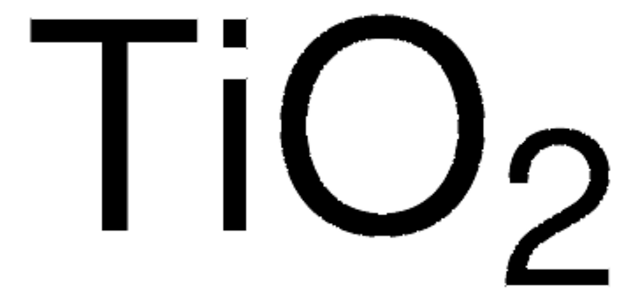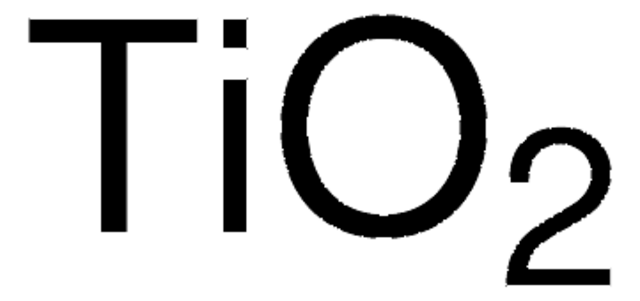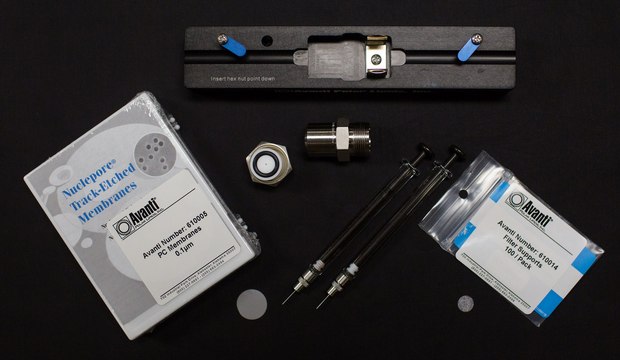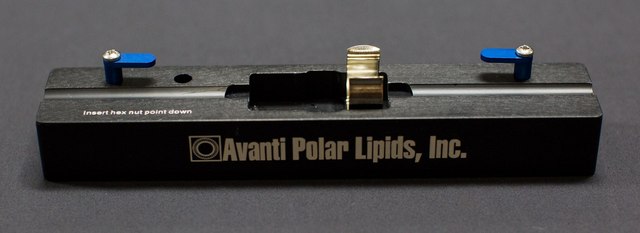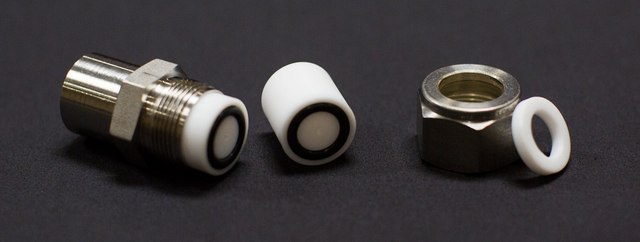637262
Titanium(IV) oxide, rutile
nanopowder, <100 nm particle size, 99.5% trace metals basis
Synonym(s):
TiO2 rutile, rutile titania, Titanium dioxide
Select a Size
Select a Size
About This Item
Recommended Products
Assay
99.5% trace metals basis
form
nanopowder
diam. × L
~10 nm × 40 nm
surface area
50 m2/g
particle size
<100 nm
density
4.17 g/mL at 25 °C (lit.)
bulk density
0.06‑0.10 g/mL
application(s)
battery manufacturing
SMILES string
O=[Ti]=O
InChI
1S/2O.Ti
Looking for similar products? Visit Product Comparison Guide
Related Categories
1 of 4
This Item | 610023 | 610024 | 610020 |
|---|---|---|---|
| feature Extruder Set with Block | feature Extruder Set without Block | feature - | feature - |
General description
Application
- A study on titanium dioxide nanoparticles synthesized from titanium isopropoxide under SILAR-induced gel method: Transition from anatase to rutile structure: This research explores the synthesis and phase transition of titanium dioxide nanoparticles from anatase to rutile structure using the SILAR-induced gel method (AC Nkele et al., 2020).
- Synthesis of rutile TiO2 nanostructures by single step hydrothermal route and its characterization: This article describes the synthesis of rutile TiO2 nanostructures using a single-step hydrothermal method and their characterization (SB Wategaonkar et al., 2020).
- Monolayer Intermixed Oxide Surfaces: Fe, Ni, Cr, and V Oxides on Rutile TiO2(011): The study investigates the formation of mixed oxide layers on rutile TiO2(011) and their structural properties (S Halpegamage et al., 2016).
- Mechanism, thermodynamics and kinetics of rutile leaching process by sulfuric acid reactions: This research examines the dissolution of rutile in sulfuric acid, focusing on the thermodynamics and kinetics of the process (AV Dubenko et al., 2020).
- Kinetics of anatase transition to rutile TiO2 from titanium dioxide precursor powders synthesized by a sol-gel process: This paper studies the phase transition kinetics of anatase to rutile TiO2 from sol-gel synthesized precursor powders (CL Wang et al., 2016).
Features and Benefits
Other Notes
Contains small amount of anatase.
Storage Class Code
13 - Non Combustible Solids
WGK
nwg
Flash Point(F)
Not applicable
Flash Point(C)
Not applicable
Personal Protective Equipment
Choose from one of the most recent versions:
Already Own This Product?
Find documentation for the products that you have recently purchased in the Document Library.
Articles
Dye-sensitized solar cells directly convert sunlight to electricity
Dye-sensitized solar cells (DSSCs) attract attention for high performance and potential low-cost production in solar energy.
Operation principle and market dominance of single crystalline silicon solar cells.
Titanium dioxide applications: Semiconducting material characteristics and diverse functionalities.
Our team of scientists has experience in all areas of research including Life Science, Material Science, Chemical Synthesis, Chromatography, Analytical and many others.
Contact Technical Service